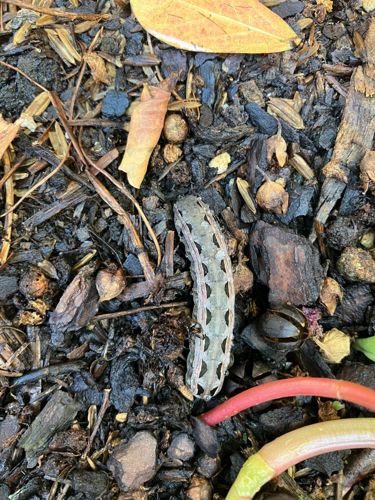Cutworm (larva)
Scientific Name: Agrotis spp., Peridroma spp., Feltia spp. (various genera within Noctuidae)
Order & Family: Lepidoptera, Noctuidae
Size: Larvae typically 2-5 cm (0.8-2 inches) long when fully grown.

Natural Habitat
Found in agricultural fields, gardens, lawns, and disturbed areas, typically burrowing in the top layer of soil or under debris during the day.
Diet & Feeding
Primarily herbivorous, feeding on the stems and leaves of young plants, often cutting them off at or below the soil line. They are known to feed on a wide variety of vegetables, grains, and ornamental plants.
Behavior Patterns
Nocturnal feeders, they curl into a tight C-shape when disturbed. They spend their days hidden in the soil or under litter and emerge at night to feed. They undergo complete metamorphosis, pupating in the soil.
Risks & Benefits
Potential risks: Cutworms are significant agricultural pests, capable of causing considerable damage to young plants, leading to crop loss. They can be particularly destructive in spring gardens. Benefits: As part of the food chain, they can be a food source for birds and other predators. However, their beneficial impact is generally outweighed by their pest status in cultivated areas.
Identified on: 9/13/2025